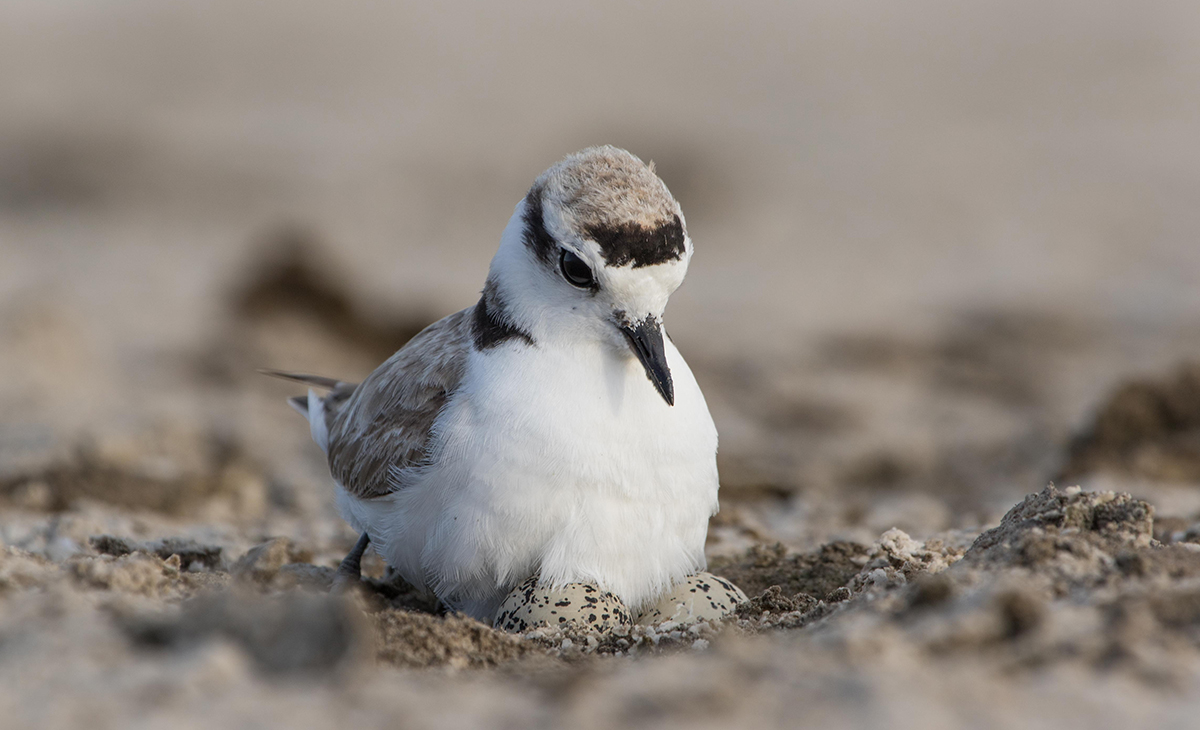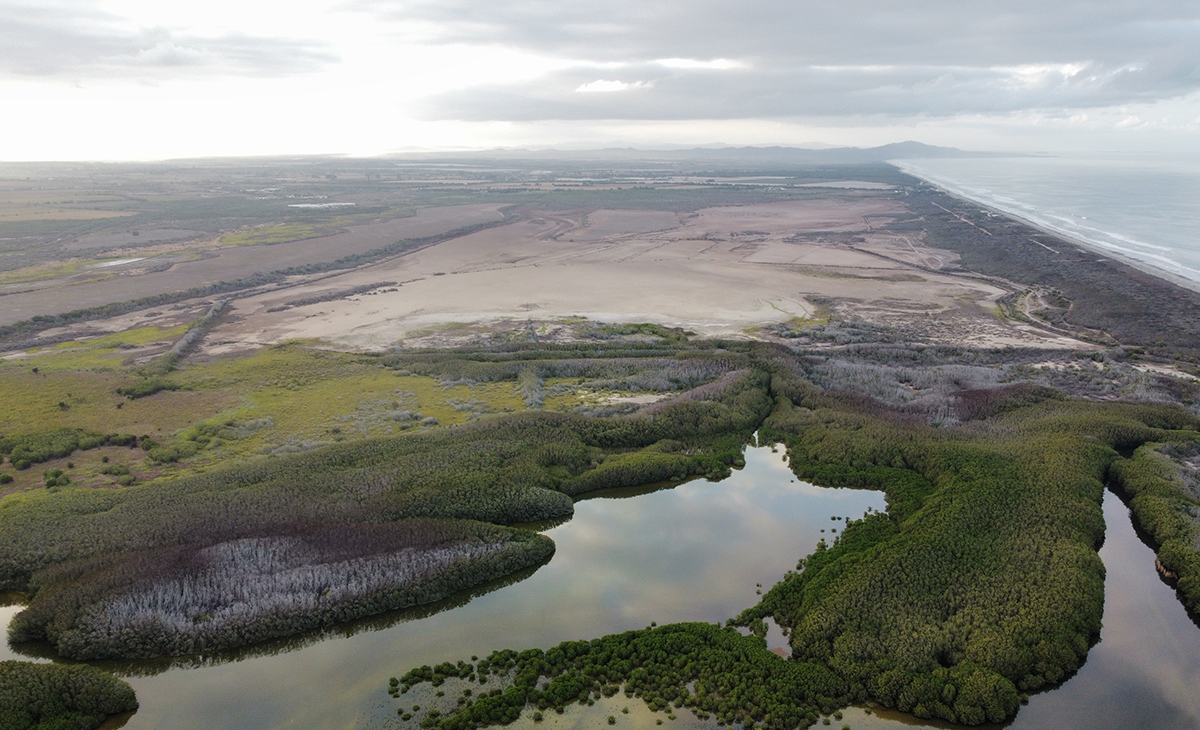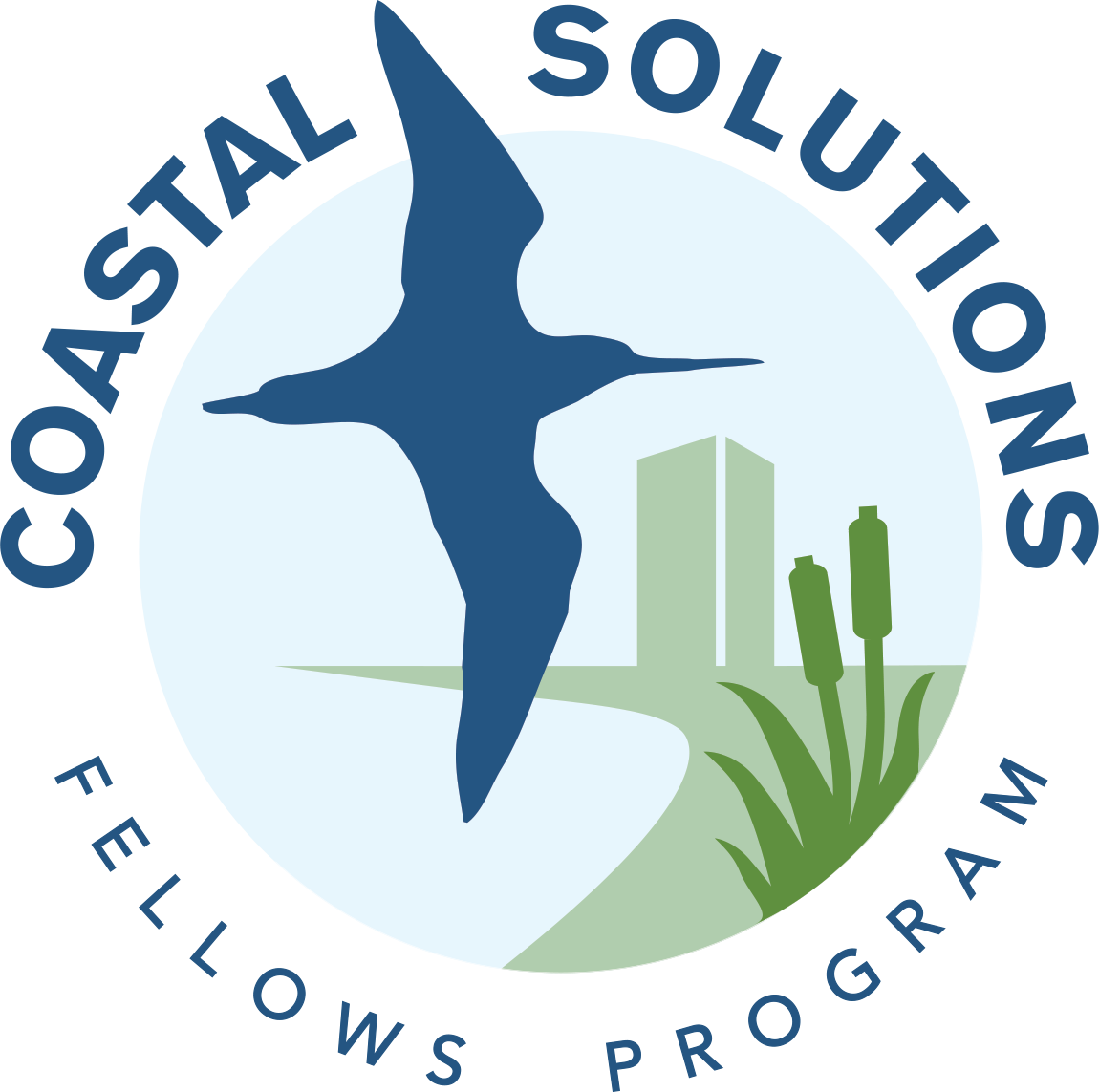The Snowy Plovers of Ceuta Bay: an Endangered Species that Refuses to Disappear
By: Medardo Cruz-López, Coastal Solutions Fellow 2020
It has been 19 years since the beginning of the breeding ecology monitoring program of the Snowy Plover (Anarhynchus nivosus) in Ceuta Bay, Mexico. During these years we have witnessed changes in the breeding habitat for the species, which has been degraded and has affected population numbers. Ceuta Bay, in Sinaloa, is part of the Western Hemisphere Shorebird Reserve Network (WHSRN) as it is a key site for these birds, and currently consists of a series of abandoned ponds (approximately 170 hectares) that were used for salt production over 45 years ago, and that today we know as the Antigua Salina. Together with partners and local communities, we are working to design actions to improve the habitat for resident and migratory shorebirds, with the goal that Snowy Plover population in Ceuta Bay can regain its place as one of the most important populations for the contribution of new breeding individuals of this species.

Ceuta was one of the sites with the highest breeding concentrations of Snowy Plovers in the country, hosting up to 10% of the Mexican population. In addition, these ponds host 35% to 45% of shorebirds during their migrations. However, these salt flats are not exempt from change. The channel through which tidal water enters the site has silted up, and the establishment of mangroves along the channel has led to a decrease in the flow of intertidal water. As a result, water inflow is increasingly scarce, especially during key periods such as the breeding and migratory season for shorebirds. This has been reflected in a 55% decrease in the number of breeding adults of Snowy Plovers in the area. Similarly, the number of shorebirds that use these ponds during migration has decreased by 27%.
Despite these changes, Snowy Plovers are resilient and continue to use these salt ponds for breeding. The number of nests has remained stable over the last four years (70-80 nests). In the last two years we have even seen a 15% increase in the number of breeding pairs. Similarly, species such as the Wilson’s Plover (Anarhynchus wilsonia) and the Least Tern (Sternula antillarum) have maintained stable populations in recent years. This is contrary to what we have observed on other species such as the Killdeer (Charadrius vociferus), which has practically stopped using the ponds to reproduce, or the Black-necked Stilt (Himantopus mexicanus), with fluctuating number of nests depending on the amount of water available.

In recent years we have been implementing actions to improve the protection of the salt ponds as an important nesting site for coastal birds. With the support of Pronatura Noroeste in Sinaloa, we have been able to install fences to prevent vehicle and cattle access to important nesting areas, as well as the installation of informative signs for visitors who use the area. Since 2020, with my Coastal Solutions project, we were able to start working on a site management plan. During the 2021-2024 period, the Municipal Government of Elota showed great interest in establishing a Municipal Environmental Conservation Area. In collaboration with Pronatura Noroeste and the Coastal Solutions Fellows Program, in September 2023 about 2470 acres of Ceuta Bay were established as a Municipal Natural Protected Area (NPA).
Currently the three organizations (Pronatura Noroeste, Government of Elota and the Coastal Solutions Program) are working on the management plan for the Municipal NPA, where we contemplate actions for habitat improvement. One of these interventions includes the restoration of water flow for shorebird species that use Ceuta Bay, with the salt ponds as the core zone for their protection and management.
The 2024 breeding season has been particularly affected by extreme drought in the region. The scarce water availability since the beginning of the breeding season (mid-April) means that breeding pairs face a bleak outlook. Despite this, two months after the start of our monitoring and protection efforts, we have managed to record more than 75 nests of Snowy and Wilson’s Plovers.

With our 2024 monitoring team, which includes Ariadna Medina, Mariana Martínez, Clemens Küpper, and me, we are monitoring nests to get information on hatching, predation, and/or abandonment. The hatchlings are tracked to see if they survive (we know which hatchlings survive because the parents have been fitted with a combination of colored plastic bands unique to each parent). These data help us estimate population production rates and detect problems at early stages. For example, the number of hatchlings that will survive during 2024 will be low. So far, only ten hatchlings have managed to reach the age at which they can fly (fledglings) and seek better conditions in other areas of the bay.
These low survival rates are regularly observed in years with water shortages, which coupled with the region’s high temperatures cause that up to 70% of hatchlings die from dehydration and lack of food. To increase the chances of survival, this season we have placed a series of containers within the vegetation, 5 cm deep and filled every three days with three liters of water, in the areas where the parents regularly bring the hatchlings to protect them from the sun and predators. We have observed plover families near these containers on a regular basis and have followed up on 12 hatchlings (in addition to the ten mentioned above) that are a few days away from fledging.
We hope that at the same time, other species of fauna, not only birds, will benefit from the improved habitat. Furthermore, with the declaration of a Natural Protected Area, it will be possible to restore some ecosystem services that have been lost in the area, such as the protection and breeding of wild shrimp, landscape improvement, maintenance of a flood buffer zone, water filtration and cleaning, and protection of the local biodiversity, for the benefit of the inhabitants of the Municipality of Elota and its foreign visitors.




The Coastal Solutions Fellows Program builds and supports an international community to design and implement solutions that address coastal challenges across the Pacific Americas Flyway. Our main goal is to conserve coastal habitats and shorebird populations by building the knowledge, resources, and skills of Latin American professionals, and by fostering collaborations among multiple disciplines and sectors.
